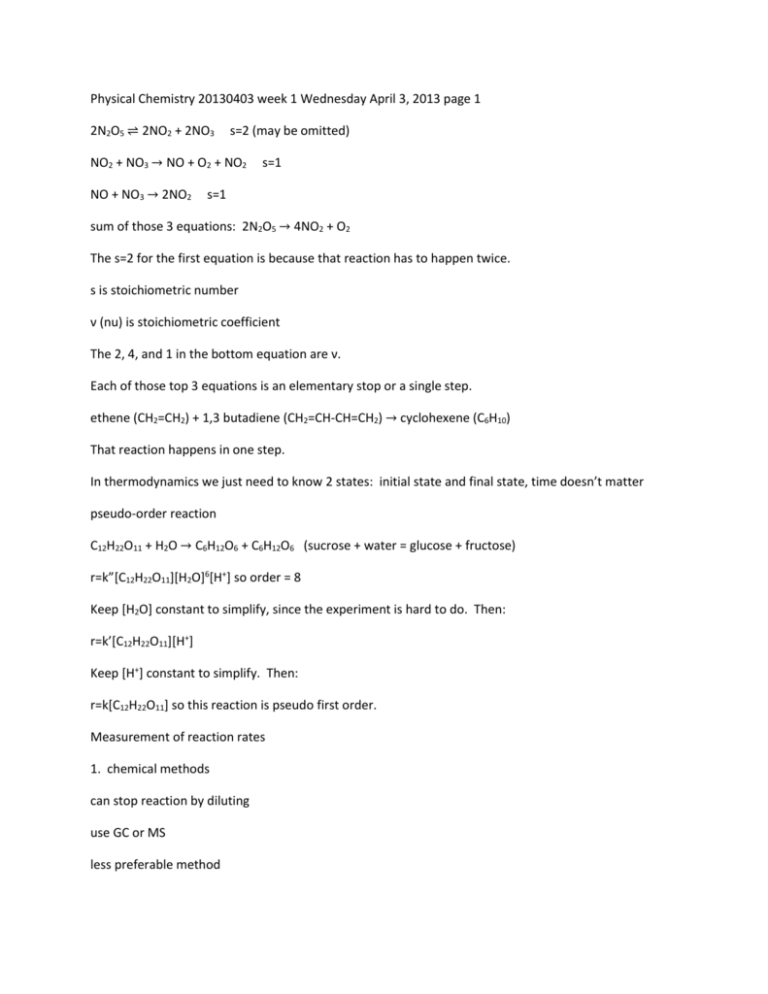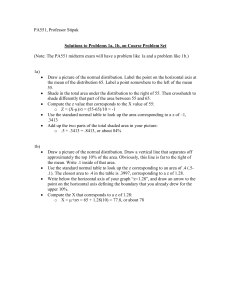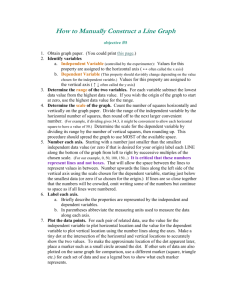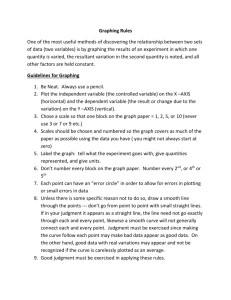Physical Chemistry 20130403 week 1 Wednesday April 3 2013
advertisement

Physical Chemistry 20130403 week 1 Wednesday April 3, 2013 page 1 2N2O5 ⇌ 2NO2 + 2NO3 s=2 (may be omitted) NO2 + NO3 → NO + O2 + NO2 NO + NO3 → 2NO2 s=1 s=1 sum of those 3 equations: 2N2O5 → 4NO2 + O2 The s=2 for the first equation is because that reaction has to happen twice. s is stoichiometric number ν (nu) is stoichiometric coefficient The 2, 4, and 1 in the bottom equation are ν. Each of those top 3 equations is an elementary stop or a single step. ethene (CH2=CH2) + 1,3 butadiene (CH2=CH-CH=CH2) → cyclohexene (C6H10) That reaction happens in one step. In thermodynamics we just need to know 2 states: initial state and final state, time doesn’t matter pseudo-order reaction C12H22O11 + H2O → C6H12O6 + C6H12O6 (sucrose + water = glucose + fructose) r=k”[C12H22O11][H2O]6[H+] so order = 8 Keep [H2O] constant to simplify, since the experiment is hard to do. Then: r=k’[C12H22O11][H+] Keep [H+] constant to simplify. Then: r=k[C12H22O11] so this reaction is pseudo first order. Measurement of reaction rates 1. chemical methods can stop reaction by diluting use GC or MS less preferable method 2. physical methods more accurate and quicker than chemical methods Integration of rate laws 1. zero order reaction very uncommon example is enzyme catalysis aA → product(s) r=k[A]0 = k -1 d[A] =k=r t is time a dt -d[A]=akdt then integrate [A] ∫ t=t -d[A]=ak ∫ [A]0 ak=k a t=0 [A] t=t -[A] | =k A t | [A]0 t=0 -[A]+[A]0 = kA(t-0) [A]0-[A]=kAt integrated rate law [A] = -kAt + [A]0 The rate r of a zero order reaction is a constant then. Graphing [A]0-[A] on the vertical axis and t on the horizontal axis gives a straight line of slope kA. This line comes from the origin, indicating it’s zero order. Graphing [A] on the vertical axis and t on the horizontal axis gives a line of slope –kA. A reaction that happens on the surface of a solid catalyst is often zero order. First order reaction First order reactions are most important because they’re very common. Nuclear decay is always first order. aA → product(s) r= -1 d[A] =k[A] a dt d[A] = -ak[A] dt d[A] = -k A [A] dt ak=k A separate variables d[A] = -k A dt [A] then integrate [A] t d[A] = -k A ∫ dt [A]0 [A] 0 ∫ [A] t ln[A] | =-k A t | [A]0 0 ln ( [A] ) = -k A t [A]0 first order [A]= [A]0 e-k At ln[A]= -k A t+ln[A]0 Graphing ln[A] on the vertical axis and t on the horizontal axis gives a straight line with slope = -kA. The y intercept is ln[A]0. Graphing [A] on the vertical axis and t on the horizontal axis gives a curve that goes asymptotically to 0 as t→∞. Each distance for t1/2 (half life) is the same amount of time. half-life when t= t 1⁄ 2 [A]= [A]0 2 so [A]0 =2[A] Remember, [A] is what’s left is the system, not how much the system has lost. ln ( t 1⁄ = 2 .693 kA [A] ) = -k A t 1⁄ 2 2[A] the [A]' s cancel first order reaction constant =constant constant The first order equations don’t apply to pseudo-first order reactions. second order reactions Second order reactions are more common than first order reactions. First order reactions can be of the type aA → product(s) or A + B → product(s). Assume the type aA → product(s) for now since it’s easier. d[A] = -k A [A]2 integrate dt [A] t d[A] ∫ = -k A ∫ dt 2 [A]0 [A] 0 -1 [A] t | =-k A t | [A] [A]0 0 -1 1 + =k A t [A] [A]0 1 1 =k A t [A] [A]0 second order Graphing 1/[A] on the vertical axis and t on the horizontal axis gives a line with slope kA. t 1⁄ = 2 1 [A]0 k A second order Graphing [A]/[A]0 on the vertical axis and t on the horizontal axis gives a curve coming down. Each t1/2 is a different width on the graph (length of time).








